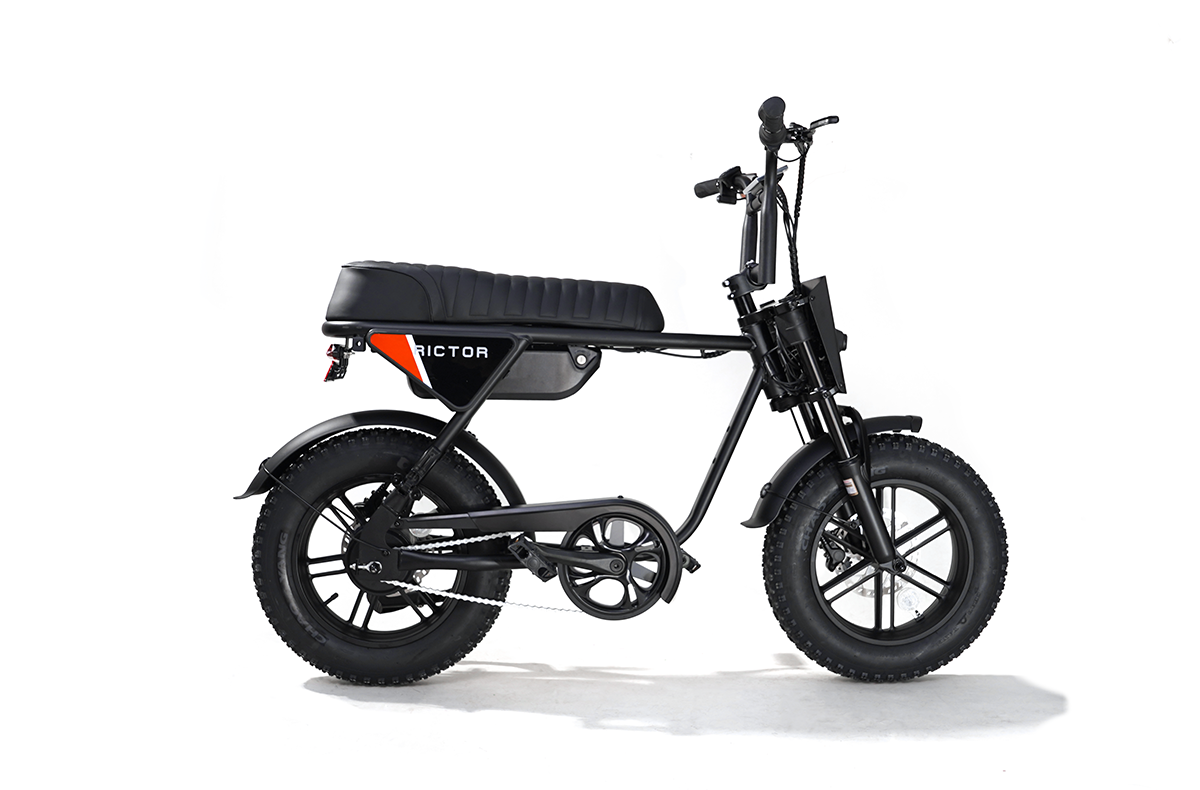
48V or 52V Battery | Which One is Right for Your E-Bike?
As the popularity of electric bike continues to grow, so does the variety of battery options available.
One of the most common questions riders ask is whether a 48V or 52V battery is the best fit for their electric bike.
The choice between these two isn’t just about picking a number—it affects the bike’s performance, range, speed, and overall riding experience.
While both are great choices, your specific needs as a rider will determine which one suits you best.
Let’s break down the key factors to help you make the right decision.
Is the Voltage of an E-Bike Battery Important
Voltage plays a crucial role in how your e-bike performs.
Higher voltage means the motor can receive more power at any given time, which translates to better acceleration, more torque, and a higher top speed.
This is why the 52V battery often outperforms a 48V system, especially in more demanding situations like steep climbs or when carrying heavier loads. In simple terms, voltage determines the “pushing force” of the electrical current sent to the motor.
A higher voltage battery allows the motor to operate more efficiently.
For instance, a 52V battery doesn't have to work as hard as a 48V battery to provide the same amount of power, which reduces strain on the motor and extends its life.
However, this comes at a cost: 52V batteries are heavier and may reduce the bike’s maneuverability, especially on technical trails.
It’s also worth noting that higher voltage can generate more heat, which may affect the battery's overall lifespan if not managed correctly.
For riders who stick to flat terrain or only use their e-bikes for short commutes, the 48V battery offers sufficient power without the extra weight.
But for those who want more punch and frequently ride in challenging conditions, a higher voltage like 52V will provide the boost they’re looking for.
Rictor K1 48V is a fantastic choice. It not only delivers solid performance on flat terrain but also features intelligent design, remote unlocking via the app, and long-lasting battery life, making it perfect for both daily commutes and weekend adventures.

Will E-Bike Voltage Sag
Voltage sag refers to the temporary drop in voltage that occurs when a battery is under heavy load, such as during rapid acceleration, hill climbs, or when using full throttle.
This phenomenon happens because the battery struggles to supply the needed current to meet the motor’s demand, which can cause a noticeable dip in performance.
All e-bike batteries experience voltage sag to some extent, but the degree of sag can vary depending on the voltage and the battery’s overall capacity.
A 48V battery is more prone to voltage sag under heavy loads compared to a 52V battery.
This is because the 52V battery has a higher baseline voltage, meaning it has more capacity to meet power demands without significant drops.
In practical terms, this means that a 52V system will feel smoother and more responsive, especially during high-demand situations like climbing steep hills or when accelerating quickly.
That said, voltage sag is unavoidable. The best way to minimize its effects is to maintain proper battery health.
Avoid fully depleting your battery, as this increases the likelihood of sagging.
Regularly charging your battery and avoiding extreme temperatures can also help keep voltage sag at bay.

SEE ALSO Are e-bikes waterproof? the truth might surprise you!we still have owesome recommendation
Is 52V Faster than 48V
52V battery can make your e-bike faster than a 48V system, but the difference goes beyond just top speed.
A higher voltage battery allows the motor to generate more torque, which means better acceleration and overall responsiveness.
The extra voltage essentially “unlocks” more power from the motor, allowing the bike to reach higher speeds more easily, especially under load or on inclines.
In terms of raw speed, the difference between 48V and 52V might only be a few miles per hour, but that’s not the full story.
The real advantage of 52V is how it affects overall ride quality. With a 52V battery, the motor doesn’t have to work as hard to deliver the same level of performance, meaning you’ll notice smoother, more consistent acceleration.
Additionally, because the 52V battery provides more power at a higher efficiency, it’s less prone to performance dips when you push the bike hard.
For riders who often find themselves on varied terrain—switching between flat roads and steep climbs—the 52V battery offers better versatility.
It ensures you have the power to maintain higher speeds even when conditions aren’t ideal.
However, for flat terrain or leisurely rides, a 48V battery will still provide plenty of speed and may even extend the bike’s range due to its lighter load on the motor.

How Fast are 48V and 52V E-Bikes in MPH
The top speed of an e-bike depends on several factors: motor power, rider weight, terrain, and of course, battery voltage.
For a 48V e-bike, you can expect to reach speeds of around 20-28 mph, depending on these factors.
Meanwhile, a 52V battery can push the speed higher, with top speeds typically ranging from 28-35 mph, assuming your motor and controller can handle the increased voltage.
It’s important to understand that battery voltage alone doesn’t set the top speed—other components like the motor and controller play key roles.
A 52V battery allows the motor to reach its full potential more quickly, which is why you’ll see higher speeds on these setups.
However, many e-bikes are legally limited to 28 mph, even if the battery and motor could theoretically go faster.
If you’re riding off-road or in areas without speed restrictions, the extra power from a 52V battery will make a noticeable difference.
It’s also worth noting that higher speeds come with trade-offs.
While a 52V system can get you moving faster, it also drains the battery more quickly at top speeds.
Riders who prioritize range over speed might prefer to stick with lower assist levels to get the most out of each charge.
Can I Use a 52V Battery on a 48V Motor E-Bike
It’s possible to use a 52V battery on a 48V motor e-bike, but it’s not always recommended.
Your motor and controller are designed to work within a specific voltage range, and using a higher voltage battery can stress these components.
If your motor and controller aren’t rated for 52V, they could overheat, malfunction, or even fail completely.
This could also void any warranties you have on your bike’s components.
That being said, many modern e-bikes come with components that are flexible enough to handle slightly higher voltages, especially if the system includes a programmable controller.
Before upgrading to a 52V battery, it’s essential to check with the manufacturer or a professional to ensure your setup can handle the increased power safely.
If you’re looking to boost your bike’s performance by upgrading to a 52V battery, you may also want to consider upgrading other components like the controller and motor to handle the extra power.
This way, you can ensure a smooth and safe transition without damaging your bike’s electrical system.

How Far Can a 48V and 52V E-Bike Go
The range of your e-bike depends on various factors, including battery capacity (measured in amp-hours), terrain, rider weight, and the level of pedal assist used.
A 48V battery, with typical capacities ranging from 10Ah to 15Ah, can give you between 20 and 60 miles on a single charge, depending on how you ride.
A 52V battery can extend that range slightly, with estimates ranging from 25 to 70 miles, particularly if you’re using lower assist levels and riding on flat terrain.
One key advantage of the 52V battery is its ability to provide consistent power even when the battery is running low.
With a 48V battery, you might notice a drop in performance as the charge decreases, but the 52V system can maintain higher speeds and power for a longer duration before it dips.
However, if you frequently ride at full throttle or use higher pedal assist levels, both battery types will drain faster, cutting down your range significantly.
To maximize your e-bike’s range, regardless of whether you choose 48V or 52V, it’s best to use lower assist levels when possible, keep your tires properly inflated, and avoid carrying unnecessary weight.
How Can You Make Your E-Bike Faster
If you're looking to boost your e-bike’s speed, there are a few methods to consider.
Upgrading to a higher voltage battery, like going from 48V to 52V, is one of the most effective ways to increase speed.
A higher voltage provides more power to the motor, allowing for faster acceleration and higher top speeds.
However, ensure that your motor and controller can handle the extra voltage before making the switch.
You can also look into upgrading the motor itself.
A more powerful motor will naturally provide higher speeds, but this upgrade can be costly and might require replacing other components like the controller and battery.
Reducing the weight of your bike can also help.
Lighter components mean the motor has less resistance to overcome, which can result in quicker acceleration and a slightly higher top speed.
Keeping your tires properly inflated will also reduce rolling resistance, allowing you to move faster with less effort.
Lastly, check if your e-bike is software-limited to a specific speed. Some bikes come with speed limiters that can be adjusted or removed, depending on local regulations.
Just be sure to stay within the legal limits for e-bike speeds in your area to avoid fines or legal issues.
Conclusion
Choosing between a 48V and 52V battery depends on your riding style and needs.
The 48V is perfect for everyday commutes and flat terrain, while the 52V offers more power for tougher rides and steeper hills.
If you’re looking for a versatile e-bike, the Rictor K1 48V provides excellent performance with smart features to enhance your ride.
FAQs
Can I charge a 52V battery with a 48V charger?
No, a 52V battery requires a specific charger designed for its voltage. Using a 48V charger could lead to improper charging or even damage the battery.
Does using a higher voltage battery affect the motor’s lifespan?
Using a higher voltage battery can put more strain on the motor if it's not designed to handle it. It’s essential to ensure the motor and controller are rated for the higher voltage to avoid damage.
Does the battery voltage affect the overall weight of the e-bike?
Yes, generally, a higher voltage battery like 52V is heavier than a 48V battery, which can affect handling and portability.



